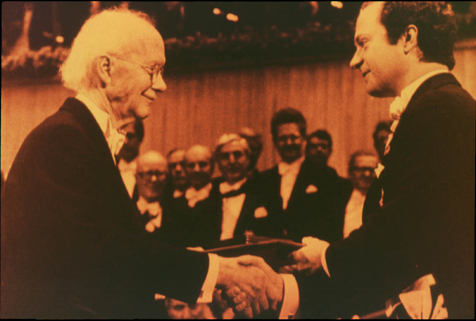
Faculty Research 1980 - 1989
An assessment of the specificity of sterol uptake and esterification in Saccharomyces cerevisiae.
Document Type
Article
Publication Date
1981
Keywords
Esters, Kinetics, Saccharomyces-Cerevisiae: me, Sterols: me, Structure-Activity-Relationship, SUPPORT-U-S-GOVT-NON-P-H-S, SUPPORT-U-S-GOVT-P-H-S
First Page
13048
Last Page
13054
JAX Source
J-Biol-Chem. 1981 Dec 25; 256(24):13048-54.
Grant
AM05190, IF32
Abstract
By growing a sterol-requiring strain of Saccharomyces cerevisiae in the presence of pairs of sterols differing by a single structural change, the in vivo specificity of sterol uptake and esterification was measured. Uptake specificity was demonstrated for the delta 5-, delta 7-, and delta 22- bonds as well as the 24 beta-methyl. Sterol uptake was shown to depend on the metabolic state of the cell, and the apparent Km of uptake for ergosterol (11.1 microM) was lower than that of cholesterol (66.7 microM). This difference in apparent Km can explain the preferential utilization of ergosterol. The selectivity for esterification showed that sterols lacking the delta 7- or delta 22- bond or the 24 beta-methyl were preferentially esterified. However, sterols lacking the delta 5-bond were not preferentially esterified. This specificity of uptake and esterification did not change significantly with alterations in the fatty acid source. These results suggest that both uptake and esterification are used to control the types of sterols in the free sterol fraction, resulting in the enrichment of ergosterol-like sterols in cellular membranes. An additional finding was that cells supplemented with sterols which have a delta 5,7-diene (7-dehydrocholesterol and ergosterol) had much reduced levels of steryl ester. This may be attributable to inhibition by a breakdown product(s) of these sterols.
Recommended Citation
Taylor FR,
Parks LW.
An assessment of the specificity of sterol uptake and esterification in Saccharomyces cerevisiae. J-Biol-Chem. 1981 Dec 25; 256(24):13048-54.

